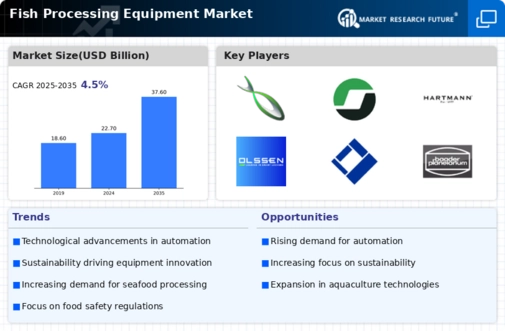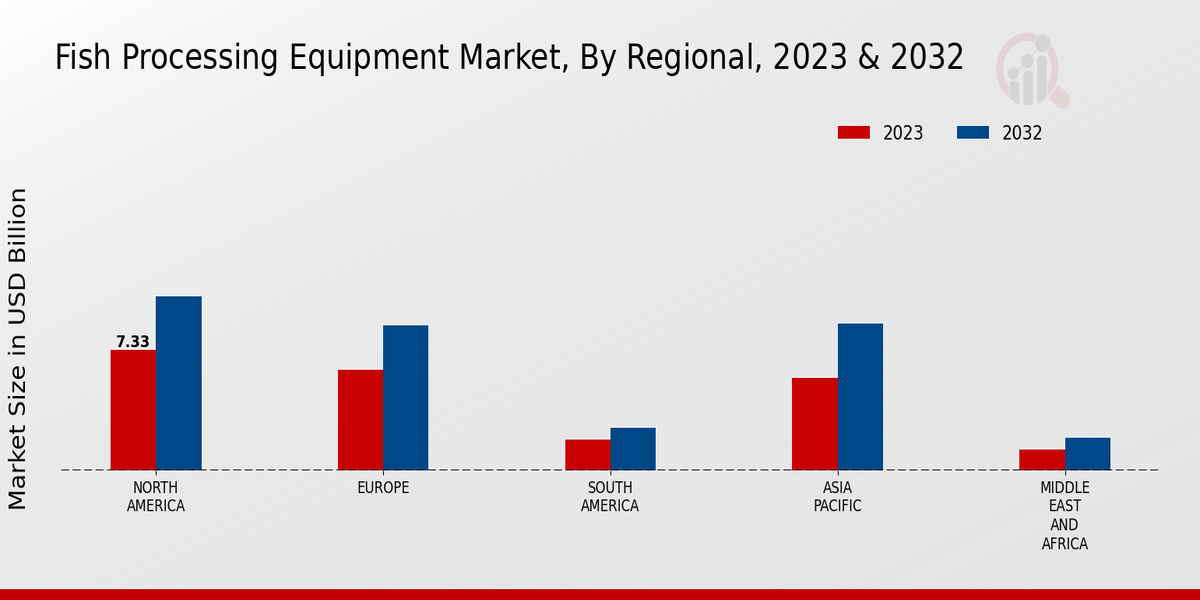Rising Global Seafood Demand
The Global Fish Processing Equipment Market Industry experiences a notable surge in demand for seafood, driven by increasing consumer preferences for healthy protein sources. As populations grow and dietary habits shift towards more sustainable options, the seafood market is projected to expand significantly. In 2024, the market value is estimated at 22.7 USD Billion, reflecting a robust appetite for processed fish products. This trend indicates a potential for growth in fish processing technologies, which are essential for meeting the rising demand while ensuring quality and safety standards in seafood production.
Expansion of Aquaculture Practices
The expansion of aquaculture practices is a pivotal driver for the Global Fish Processing Equipment Market Industry. As wild fish stocks face depletion, aquaculture emerges as a sustainable alternative, providing a reliable source of seafood. The increasing investment in aquaculture facilities necessitates advanced processing equipment to handle the growing volumes of fish produced. This trend is expected to propel the market value, with projections indicating a rise to 37.6 USD Billion by 2035. The integration of efficient processing technologies in aquaculture operations is essential for maintaining product quality and meeting consumer expectations in a competitive market.
Global Trade and Export Opportunities
The Global Fish Processing Equipment Market Industry benefits from the expansion of global trade and export opportunities for seafood products. As countries seek to diversify their economies and enhance food security, the export of processed fish products becomes increasingly vital. This trend is supported by trade agreements and partnerships that facilitate access to international markets. The demand for high-quality processed seafood is growing, particularly in regions with limited local production capabilities. Consequently, fish processing equipment manufacturers are likely to see increased demand for their products, as businesses aim to capitalize on these global trade opportunities.
Sustainability and Environmental Regulations
The Global Fish Processing Equipment Market Industry is significantly influenced by the growing emphasis on sustainability and compliance with environmental regulations. Governments worldwide are implementing stricter guidelines to promote sustainable fishing practices and reduce waste in seafood processing. This regulatory landscape encourages the adoption of eco-friendly processing technologies and equipment that minimize environmental impact. Companies that invest in sustainable practices may gain a competitive edge, as consumers increasingly favor brands that prioritize environmental responsibility. The focus on sustainability is likely to shape the future of the industry, fostering innovation and investment in green technologies.
Technological Advancements in Processing Equipment
Innovations in fish processing equipment play a crucial role in enhancing efficiency and productivity within the Global Fish Processing Equipment Market Industry. Advanced technologies such as automated filleting machines, high-capacity freezing systems, and sophisticated packaging solutions are increasingly adopted. These innovations not only reduce labor costs but also improve product quality and shelf life. As the industry evolves, the integration of smart technologies, including IoT and AI, is likely to further optimize processing operations. This technological evolution is expected to contribute to the market's growth trajectory, aligning with the projected CAGR of 4.7% from 2025 to 2035.





















